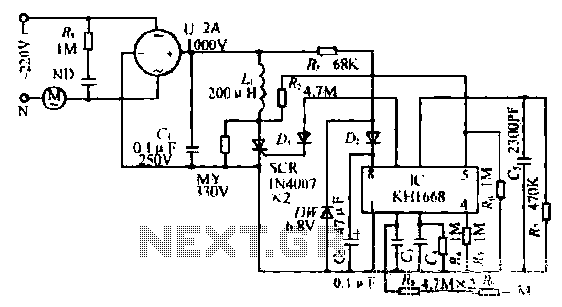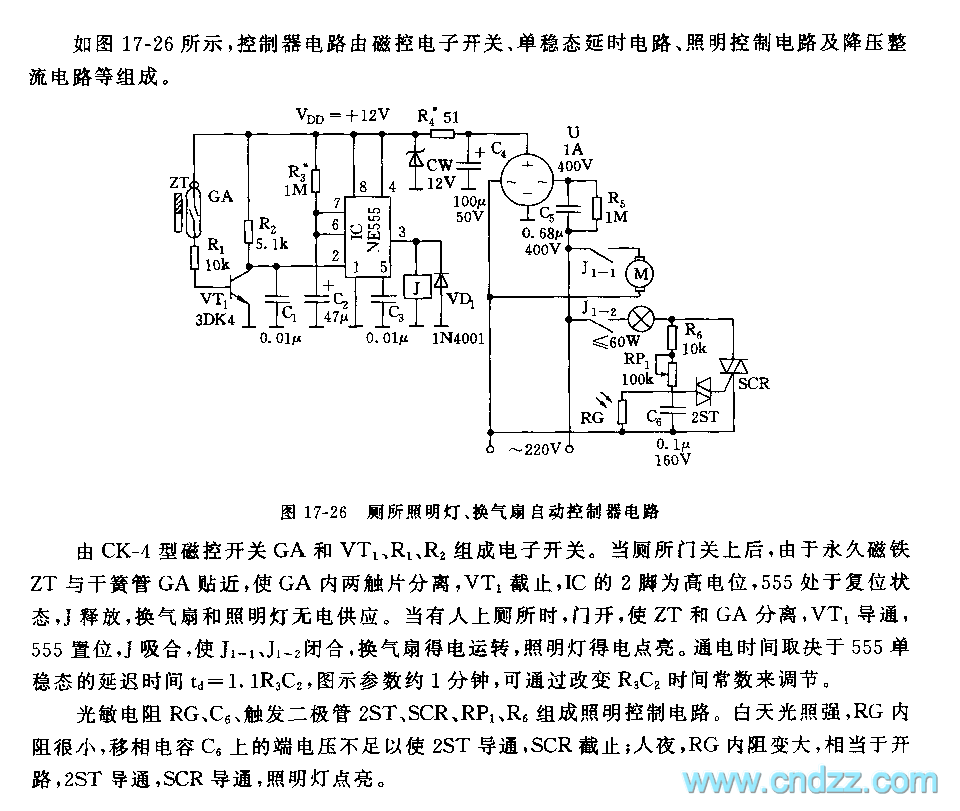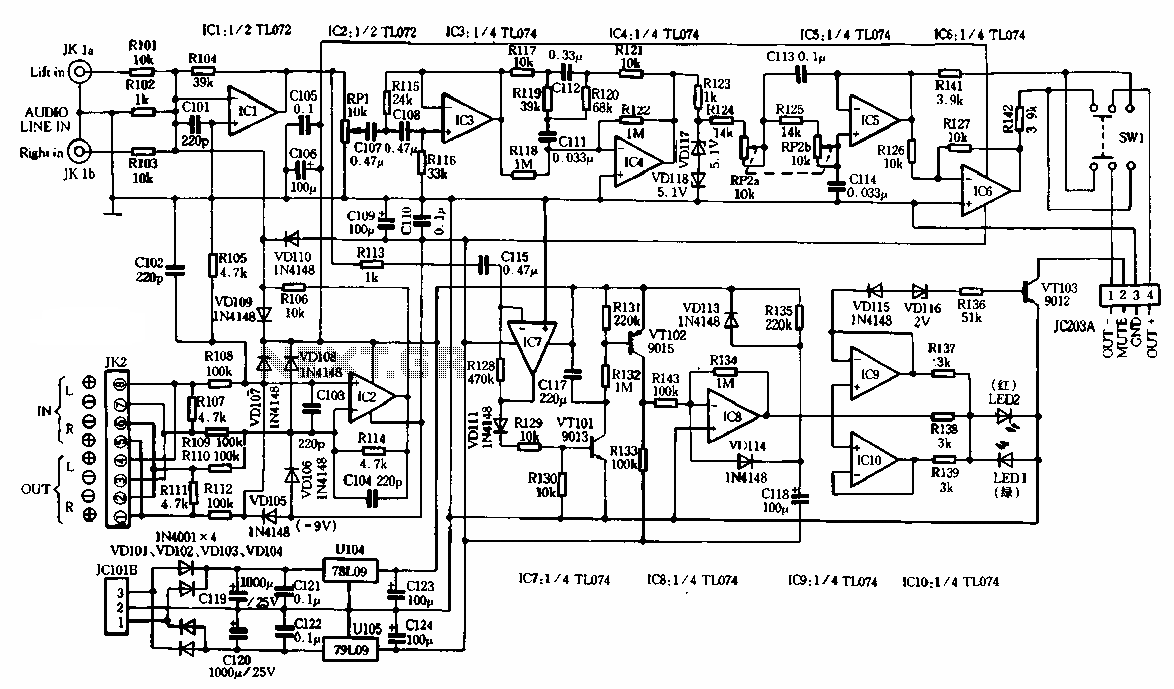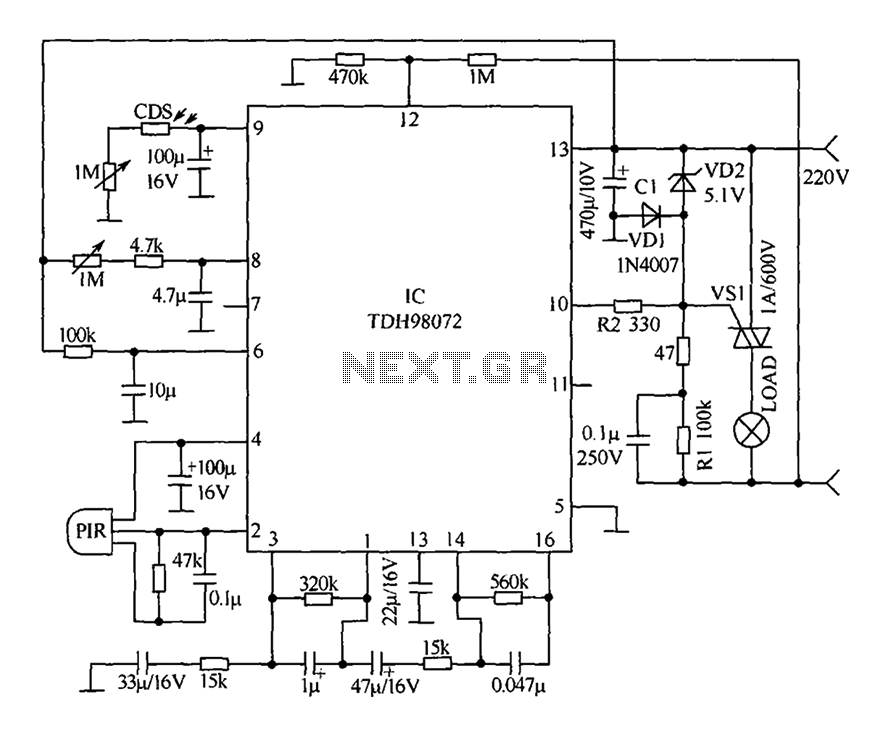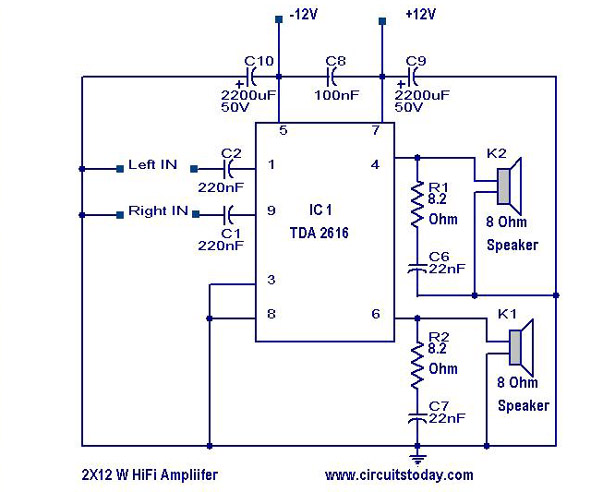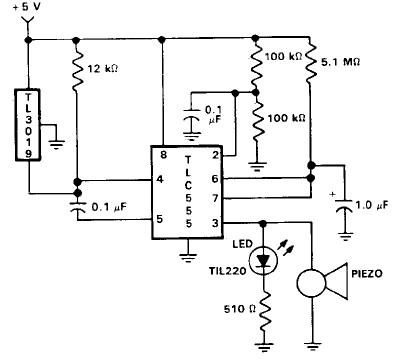
Ratio discriminator circuit
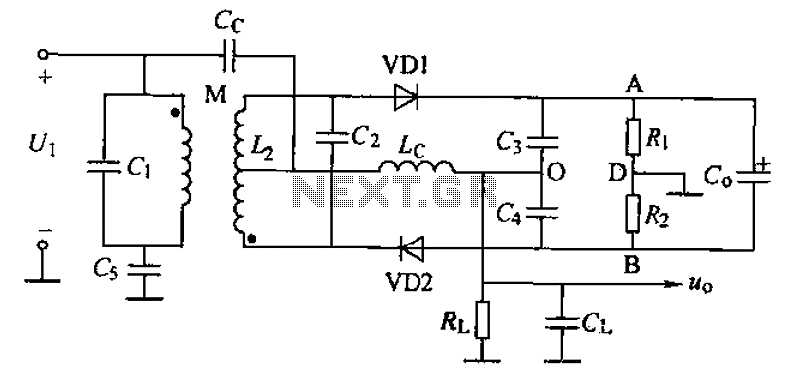
A common phase frequency detector can be categorized into mutual coupling and capacitive coupling frequency discriminators based on their coupling methods. The improved mutual coupling ratio discriminator circuit is illustrated in the figure, utilizing a 2AP9 diode. The phase discriminator functions similarly in both AM and FM wavelet transform sections, though notable modifications exist in the detector segment. The differences include: 1) the detection involves two capacitors, C3 and C4, with connection points O and D, and two resistors connected at point D to separate the frequency discriminator output voltage from points D and E. 2) At output points A and B, a large capacitor G, with an approximate capacitance of 10 µF, is connected. Due to the time constant of the circuit (R1 + R2)C being substantial, around 0.1 to 0.2 seconds, the detection process remains stable for amplitude changes above 15 Hz, resulting in a constant Udc across capacitor G. 3) Two diodes are included, with one diode connected in the opposite direction to the phase frequency discriminator. This configuration not only ensures a DC path through both diodes but also makes the output voltage polarity of both detectors identical. Consequently, the output voltage at both ends of the two detectors is summed.
The common phase frequency detector serves as a critical component in various communication systems, enabling the extraction of frequency information from modulated signals. The mutual coupling and capacitive coupling methods allow for flexibility in design based on the specific requirements of the application. The improved mutual coupling ratio discriminator circuit, incorporating the 2AP9 diode, enhances performance by providing better sensitivity and stability.
The use of capacitors C3 and C4 in the detection process allows for effective filtering of the signal, ensuring that only relevant frequency components are processed. The strategic placement of resistors at point D facilitates the separation of output voltages, minimizing interference and ensuring clear signal representation. The connection of a large capacitor G at outputs A and B plays a pivotal role in stabilizing the output voltage during rapid amplitude changes, which is crucial in maintaining signal integrity in dynamic environments.
The inclusion of diodes in the circuit design is essential for ensuring that the output voltages from the two detectors remain in phase, allowing for coherent summation. This design choice enhances the overall reliability of the frequency detection process, making it suitable for applications requiring precise frequency tracking and phase comparison. The comprehensive design considerations taken in this circuit make it a robust solution for phase frequency detection in modern electronic systems. Common phase frequency detector can be divided into mutual coupling and capacitive coupling frequency discriminator frequency discriminator according to their coupling. Its imp roved mutual coupling ratio discriminator circuit is shown in the figure, the diode is 2AP9 2. z- phase discriminator in an AM-FM FM wavelet transform parts of the same, but there are significant changes in the detector section. To type differences are: 1) the detection of two capacitors C3 and the connection point O C4 and two resistors connected point D separate frequency discriminator output voltage two from D, E remove points.
2) at the output A, B and connected at both ends of a large capacitance G, the electrical capacity of about lOyF, because of the time (R. + R2) C circuit constant number of large, about (o.1 ~ o .2) s, so that the detection process, for more than 15Hz amplitude changes, Udc on the capacitor G remained unchanged.
3) two diodes, one diode and phase frequency discriminator in the connection in the opposite direction. So in addition to ensure that the two diodes DC path, but also makes the two detector output voltage polarity become identical.
Thus, a two detectors at both ends of the output voltage is the sum.
The common phase frequency detector serves as a critical component in various communication systems, enabling the extraction of frequency information from modulated signals. The mutual coupling and capacitive coupling methods allow for flexibility in design based on the specific requirements of the application. The improved mutual coupling ratio discriminator circuit, incorporating the 2AP9 diode, enhances performance by providing better sensitivity and stability.
The use of capacitors C3 and C4 in the detection process allows for effective filtering of the signal, ensuring that only relevant frequency components are processed. The strategic placement of resistors at point D facilitates the separation of output voltages, minimizing interference and ensuring clear signal representation. The connection of a large capacitor G at outputs A and B plays a pivotal role in stabilizing the output voltage during rapid amplitude changes, which is crucial in maintaining signal integrity in dynamic environments.
The inclusion of diodes in the circuit design is essential for ensuring that the output voltages from the two detectors remain in phase, allowing for coherent summation. This design choice enhances the overall reliability of the frequency detection process, making it suitable for applications requiring precise frequency tracking and phase comparison. The comprehensive design considerations taken in this circuit make it a robust solution for phase frequency detection in modern electronic systems. Common phase frequency detector can be divided into mutual coupling and capacitive coupling frequency discriminator frequency discriminator according to their coupling. Its imp roved mutual coupling ratio discriminator circuit is shown in the figure, the diode is 2AP9 2. z- phase discriminator in an AM-FM FM wavelet transform parts of the same, but there are significant changes in the detector section. To type differences are: 1) the detection of two capacitors C3 and the connection point O C4 and two resistors connected point D separate frequency discriminator output voltage two from D, E remove points.
2) at the output A, B and connected at both ends of a large capacitance G, the electrical capacity of about lOyF, because of the time (R. + R2) C circuit constant number of large, about (o.1 ~ o .2) s, so that the detection process, for more than 15Hz amplitude changes, Udc on the capacitor G remained unchanged.
3) two diodes, one diode and phase frequency discriminator in the connection in the opposite direction. So in addition to ensure that the two diodes DC path, but also makes the two detector output voltage polarity become identical.
Thus, a two detectors at both ends of the output voltage is the sum.
